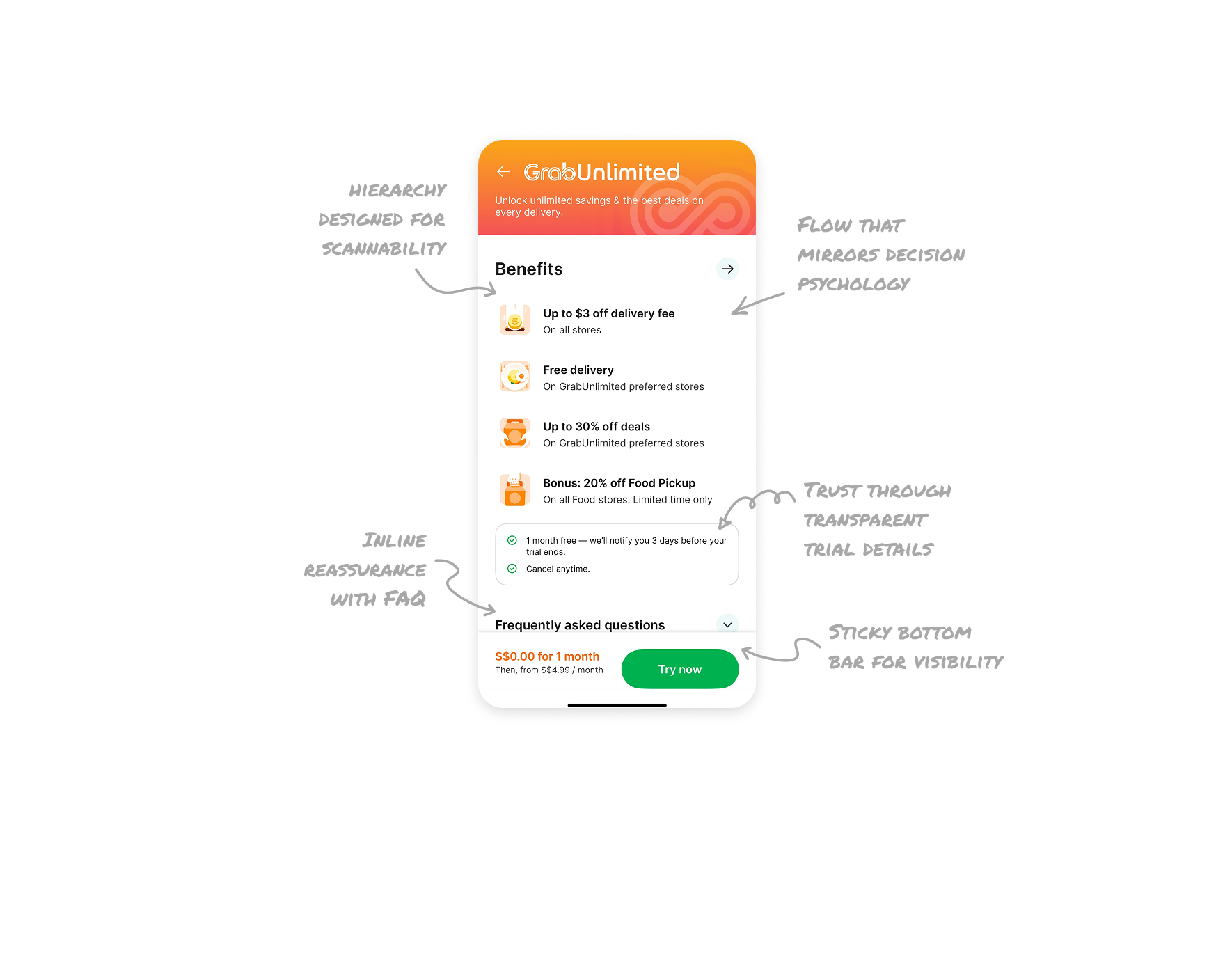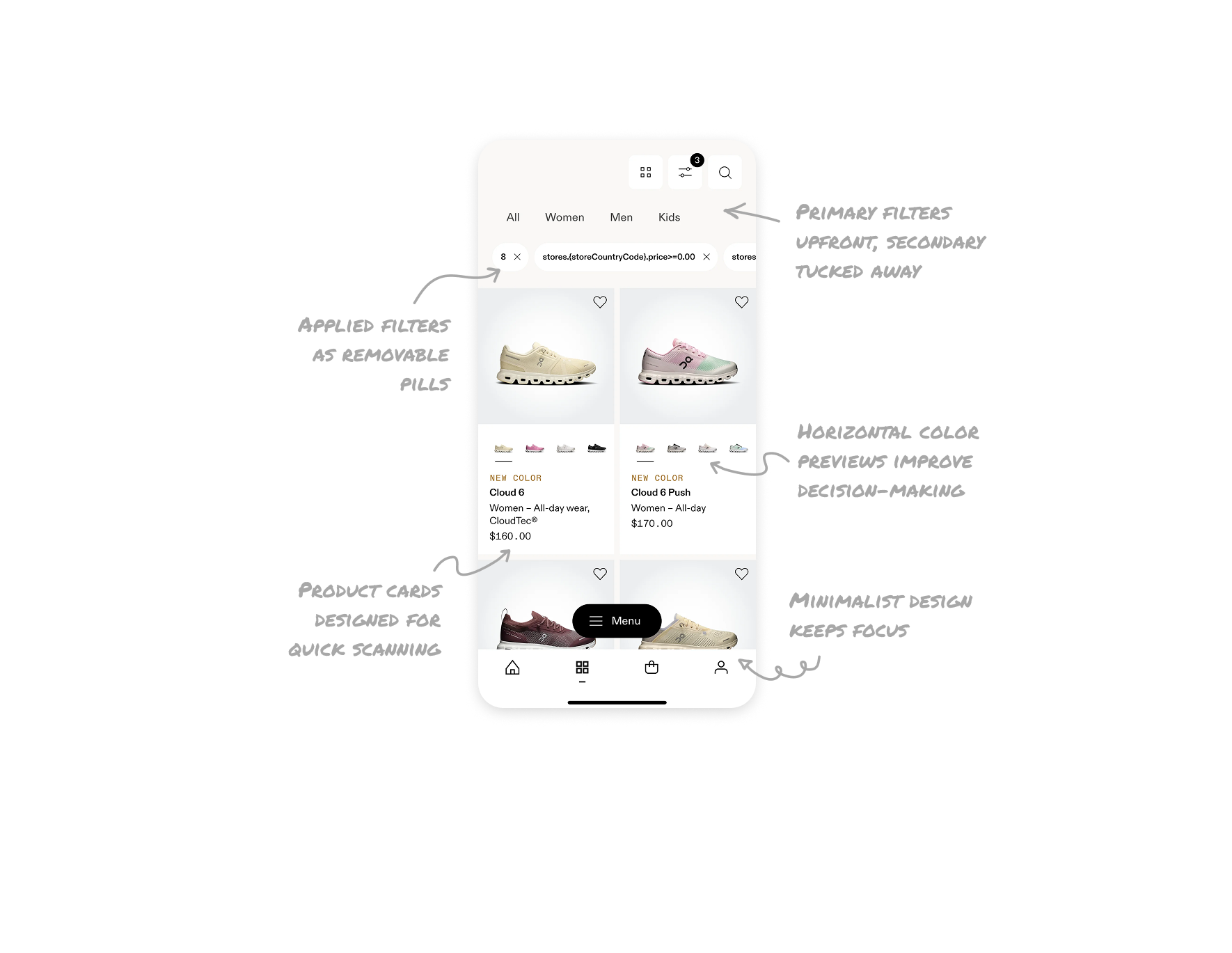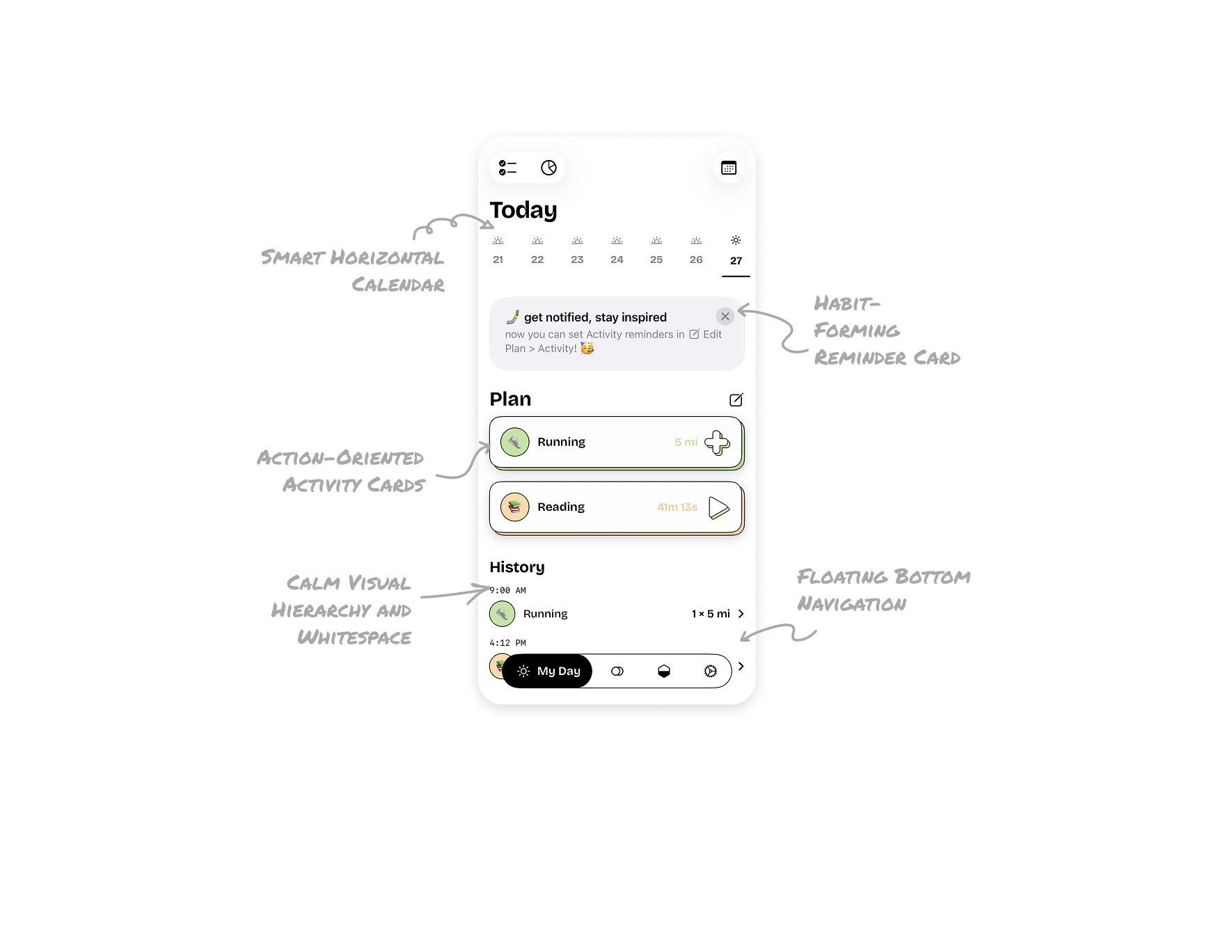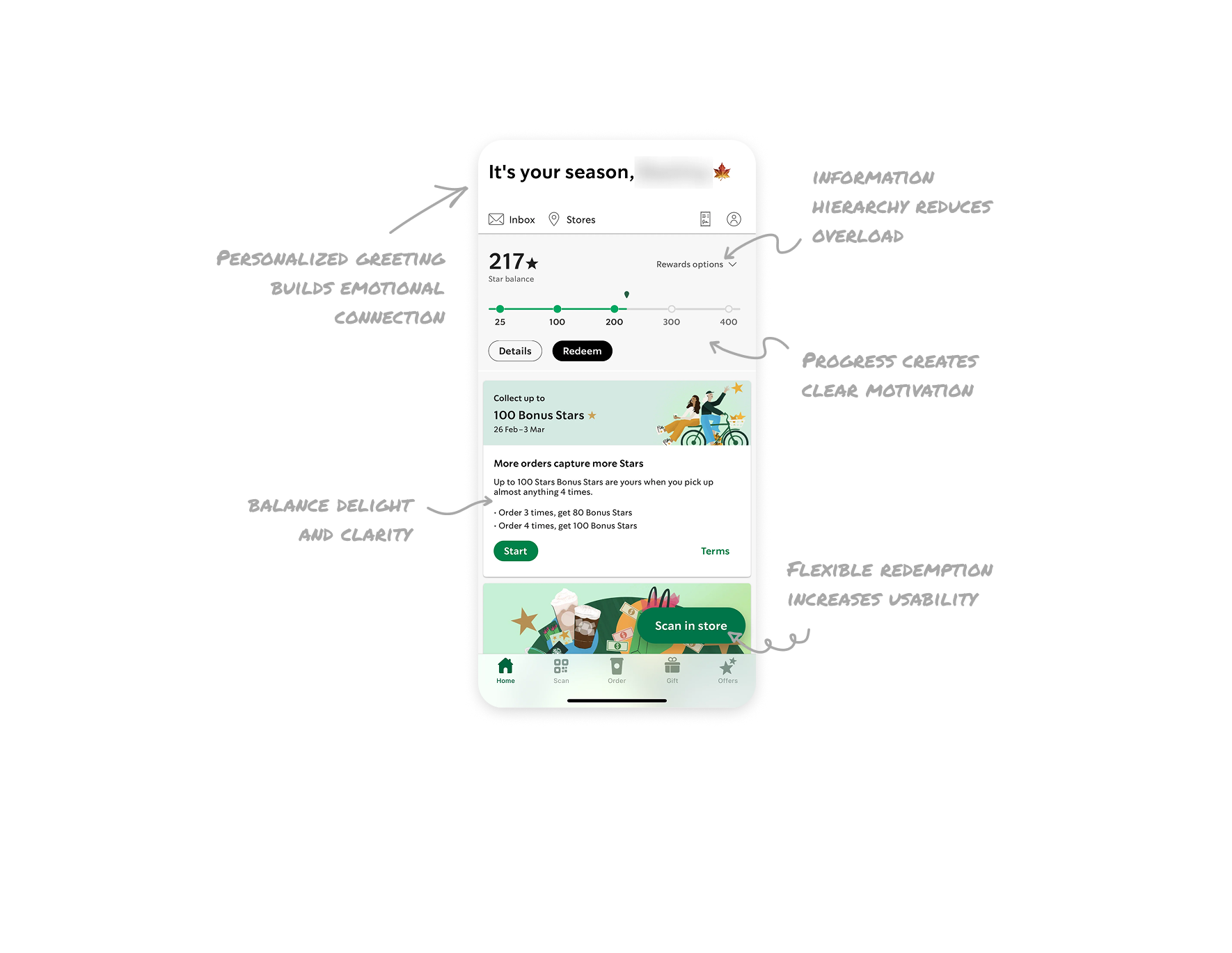Waymo Ride Booking UI: 5 Smart Design Lessons - Waymo UI Breakdown

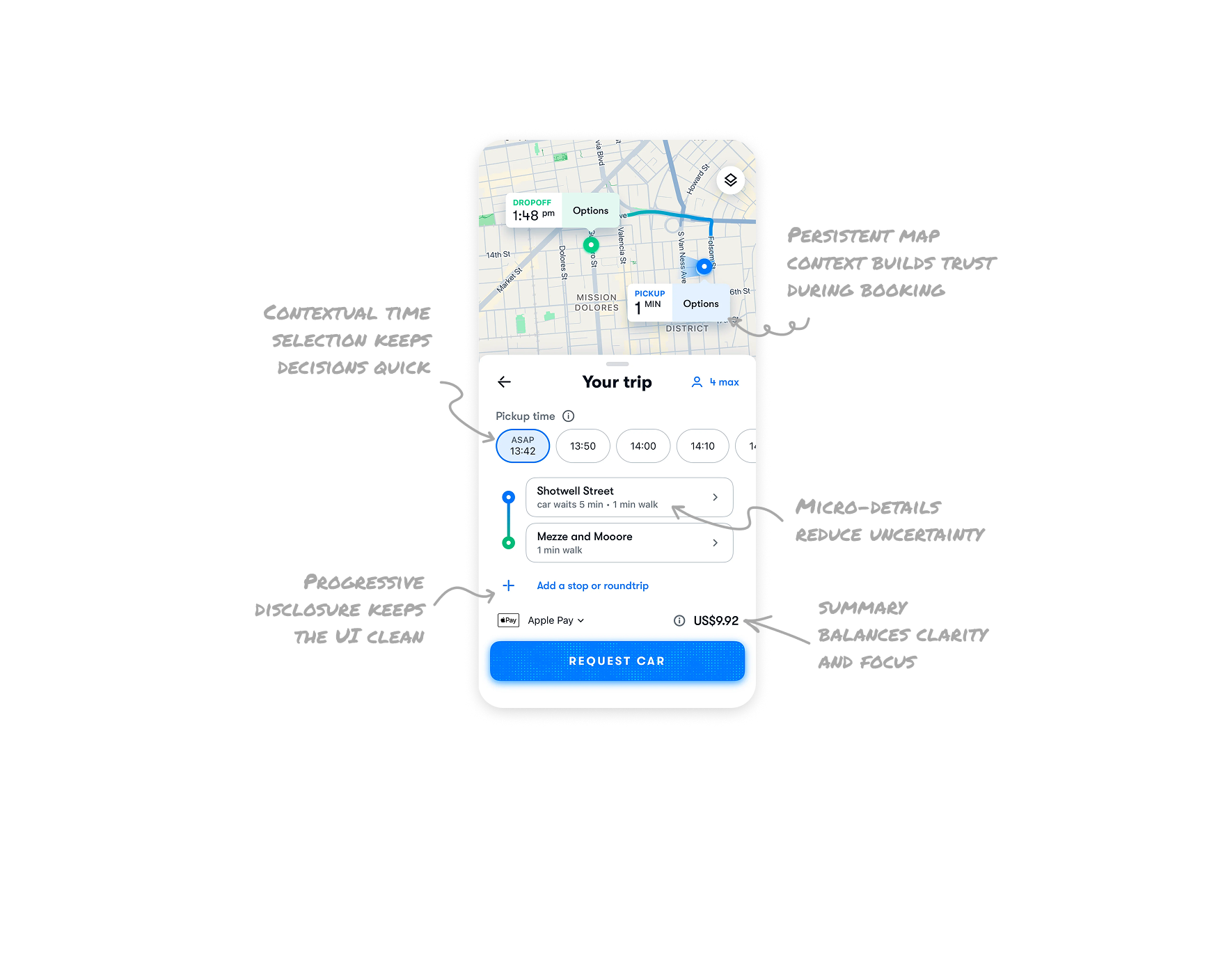
Contextual time selection keeps decisions quick
Showing pickup times in a horizontal scroll makes sense for real-time booking behavior. Most users schedule rides ASAP or within a short window, so this layout supports fast, low-effort decisions.
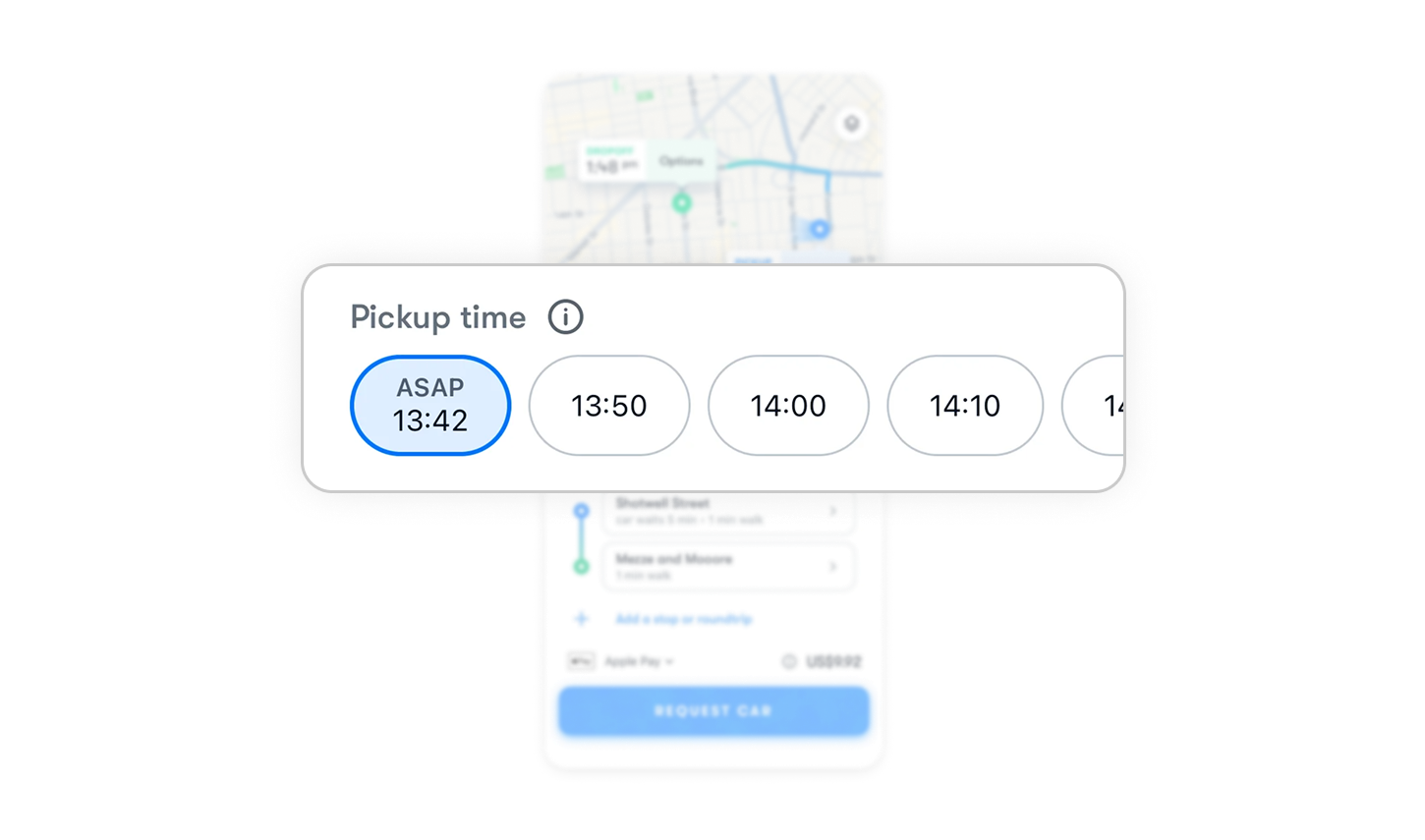
Micro-details reduce uncertainty and boost confidence
The UI adds clarity by displaying supporting details like how long the car will wait and the walking distance to the pickup. These small context cues help users prepare and feel in control before confirming the trip.

Progressive disclosure keeps the interface clean
The “Add a stop or round trip” link appears subtly below route details. This keeps the primary booking flow simple while still supporting advanced trip setups, only when users need it.

Seamless payment summary balances clarity and focus
Payment method and cost appear in a single minimalist row. It feels integrated, not interruptive. The info icon allows deeper exploration (like fare breakdown) without crowding the interface.
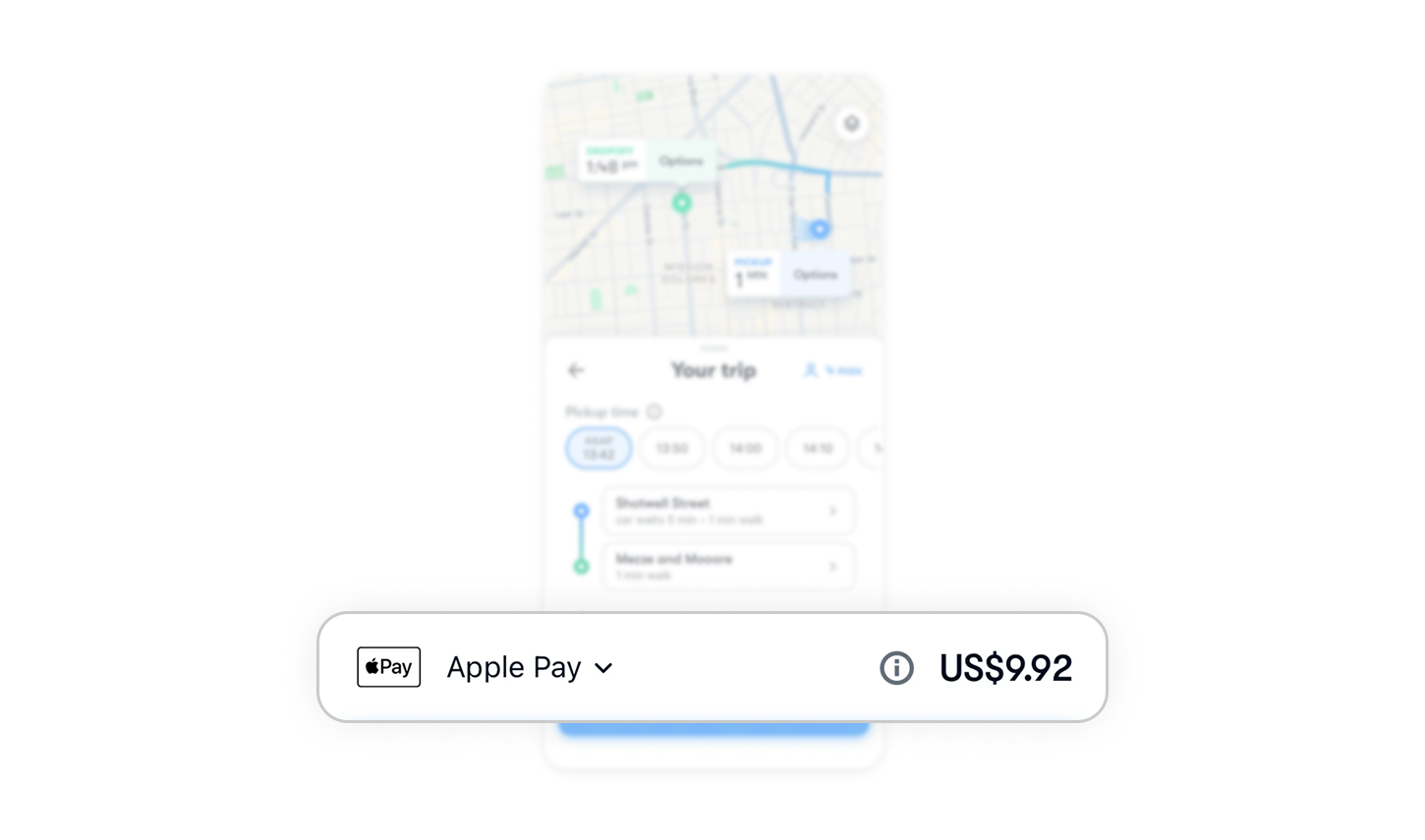
Persistent map context builds trust during booking
Placing all booking details in a bottom sheet maintains visual continuity with the live map above. Users never lose context of their route, pickup point, or location while entering trip details, creating a sense of flow and confidence.

Similar Breakdown Lessons
